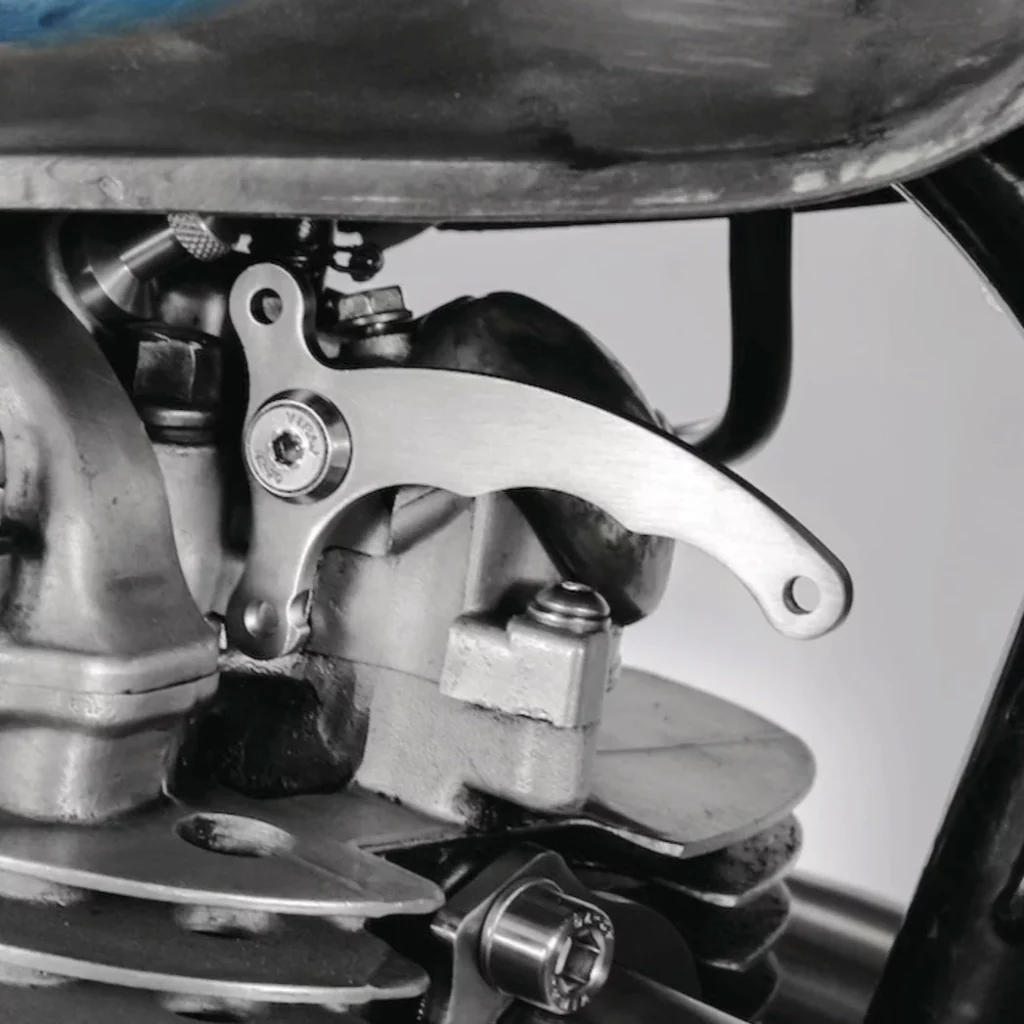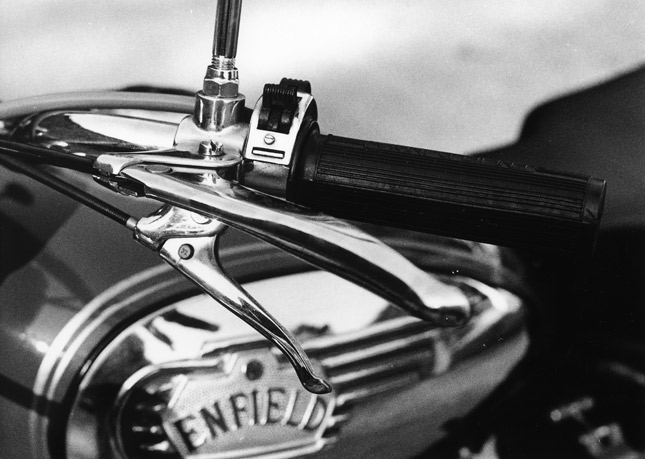Before starting, engage the decompression lever to lower engine compression. Start the engine and release the lever once it’s running for regular operation.
The decompression lever plays a crucial role in the operation of machinery and vehicles. It is an important feature that helps start engines smoothly and prevent potential damage.
Now, How to Use Decompression Lever to start the vehicle effortlessly?
The decompression lever allows users to release the pressure within the engine’s combustion chamber, making it easier to turn over the engine and start it effortlessly.
This lever is commonly found in diesel engines, especially in large vehicles such as tractors, generators, and heavy-duty trucks.
Operators can avoid excessive strain on the engine components by using the decompression lever effectively, prevent kickbacks, and ensure a safer and more efficient starting process.
Understanding the importance of using the decompression lever is essential for smoothly maintaining and operating machinery and vehicles.
What Is A Decompression Lever Used For?

A decompression lever temporarily reduces compression in the engine’s cylinder, making it easier to start the engine, especially when it’s cold or facing resistance.
Using the decompression lever in an engine is vital for easy starting. It temporarily reduces compression, easing the effort required to turn the engine over during startup. This feature aids in preventing kickback and ensures smoother ignition.
How to Use Decompression Lever?
The decompression lever is an essential crucial component in starting and operating certain types of engines, particularly those equipped with a compression release system.
Understanding the importance of using the decompression lever correctly can prevent engine damage and facilitate easier starting.
But How to Use Decompression Lever in Your vehicle?
Using a decompression lever in an engine is a straightforward process. Follow these step-by-step guidelines for using the decompressor lever in your vehicle.
Locate the Lever: Identify the decompression lever on your engine. It’s often situated near the cylinder head or valve cover.
Remember, not all the the vehicle has the decompressor lever. Therefore, you must first check whether your vehicle has the decompressor lever.
Preparation: Before starting the engine, ensure that all safety measures are in place and you’re in a safe and well-ventilated area.
Engage the Lever: If the engine is cold or you anticipate resistance during starting, engage the decompression lever by moving it into the “open” or “decompression” position. This typically involves pushing or pulling the lever, depending on its design.
Ignition Process: Proceed with the engine’s ignition process, following the manufacturer’s recommended starting procedure.
Starting the Engine: With the decompression lever engaged, turn the ignition key or use the starter button to initiate the engine start. Since the compression is reduced, the engine should turn over more easily.
Engine Start: Disengage the decompression lever once the engine has successfully started and is running smoothly. Return it to the normal position, which is often labeled as “closed” or “compression.”
Warm-Up: Allow the engine to warm up briefly before resuming normal operation. During this time, monitor the engine’s performance to ensure everything is functioning as expected.
Remember that not all vehicles have decompression levers, and their operation may vary based on the engine’s design and manufacturer. Always consult your engine’s manual for specific instructions and safety guidelines before using the decompression lever.
Why Is It Important To Use The Decompression Lever In Your Vehicle?

Using the decompressor lever is important for the smooth operation of your vehicle. Once the engine starts, the decompressor lever minimizes wear and enhances the safety of your vehicle.
Here’s a detailed discussion of why using the decompression lever in your vehicle is important.
Easier Engine Start: Using the decompressor lever Reduces cylinder compression, making engine ignition smoother, especially in challenging conditions.
Less Strain on Starter: Using the Decompressor lever Decreases starter motor effort, extending its lifespan and ensuring reliable starting.
Minimized Wear: Using the decompressor lever Reduces mechanical stress during ignition, prolonging the engine’s components’ durability.
Enhanced Safety: Using the Decompressor lever Reduces kickback risk, ensuring a safer and more controlled ignition process.
Quick Warm-Up: Using the Decompressor lever Allows engines to warm up faster, improving efficiency and emission control.
Efficiency Boost: Using the Decompressor lever Reduces initial resistance, leading to better fuel efficiency and smoother performance.
Prevents Flooded Engines: Using the Decompressor lever Aids in preventing flooded engines during starting attempts.
Operator Comfort: Using the Decompressor lever Makes starting less physically demanding for operators.
Smooth Operation: Using the Decompressor lever Leads to smoother and more controlled engine startups.
Longevity: Consistent use of decompressor lever contributes to the engine’s overall longevity and reliability.
FAQs
- Is using the decompression lever the same as using the choke?
No, the decompression lever and choke serve different purposes. The decompression lever reduces cylinder pressure, while the choke adjusts the air-fuel mixture for cold starts. Both can aid in starting the engine smoothly.
- When should I use the decompression lever?
You should use the decompression lever when starting the engine, and it needs a gentler ignition process.
- How does the decompression lever work?
When the decompression lever is engaged, it opens a valve that releases pressure from the cylinder, reducing compression. This makes it easier for the engine to turn over during the start.
- Where is the decompression lever located?
The decompression lever is usually located near the engine’s cylinder head or valve cover, where it’s easily accessible for operation.
- Do all engines have a decompression lever?
No, not all engines have a decompression lever. It’s more commonly found on certain types of engines, particularly those with higher compression ratios or specific starting challenges.
- How do I use the decompression lever?
To use the decompression lever, engage it before starting the engine. This reduces compression temporarily. Once the engine is running smoothly, disengage the lever.
- Should I leave the decompression lever engaged while the engine is running?
No, you should disengage the decompression lever once the engine is running. Leaving it engaged while the engine is running can affect its performance and efficiency.
- Can using the decompression lever damage the engine?
When used as intended, the decompression lever should not damage the engine. It’s designed to help start the engine more easily without causing harm.
- Can I start the engine without using the decompression lever?
Yes, you can start the engine without using the decompression lever, but in some cases, it might require more effort and strain on the engine during the starting process.
Conclusion
The decompression lever is crucial for starting certain engines, particularly those with high compression ratios. It is vital in releasing excess pressure and allowing for easier engine starting.
So, how to use decompression lever for the smooth operation of your vehicle?
As explained earlier, to use the decompression lever, one must engage it before attempting to start the engine and then release it once it runs smoothly.
This simple yet important step ensures a safe and successful engine start, preventing unnecessary strain on the engine and potentially avoiding damage or failure.

